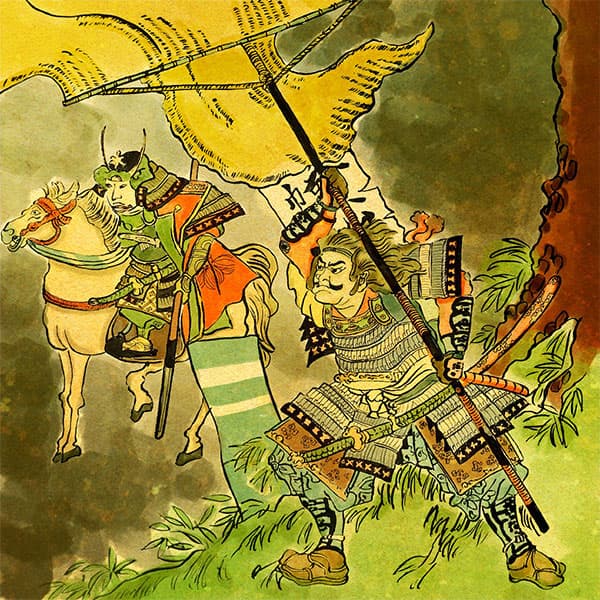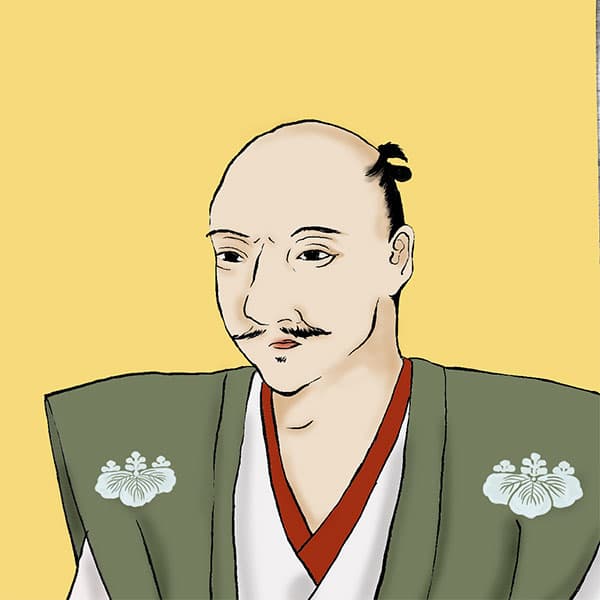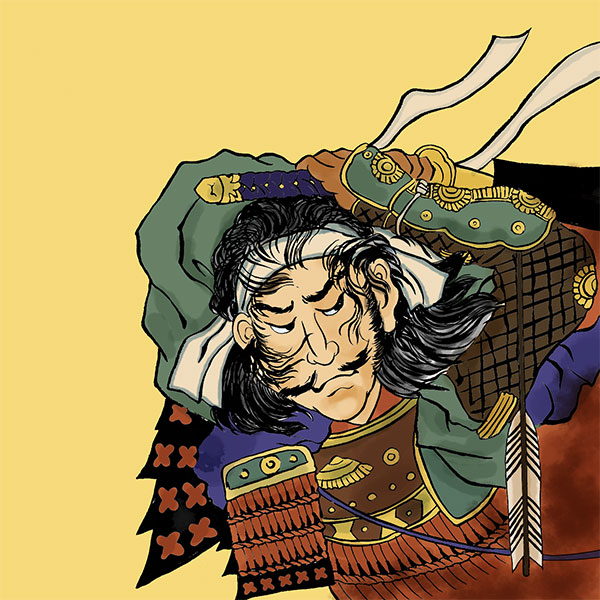Battle of Inabayama Castle (1/2)Oda Nobunaga conquers Mino

Battle of Inabayama Castle
- Article category
- case file
- Incident name
- Battle of Inabayama Castle (1567)
- place
- Gifu Prefecture
- Related castles

Gifu Castle

Kiyosu Castle

Komakiyama Castle

Inuyama Castle
National treasure tower
- people involved
In August 1567, Oda Nobunaga captured Inabayama Castle, the stronghold of the Saito clan in Mino Province (Gifu Prefecture), defeated Tatsuoki Saito, and conquered Mino. After this battle, known as the ``Battle of Inabayama Castle'', Nobunaga renamed Inabayama Castle ``Gifu Castle'' and made it into his base, making a full-fledged effort to unify the country. How did Nobunaga capture the famously impregnable Inabayama Castle? This time, I will explain the battle of Inabayama Castle and the events leading up to the battle.
Oda family vs. Saito family: conflict over Mino
Long before the Battle of Inabayama Castle, the Oda and Saito families had been fighting over Mino. Originally, Mino was ruled by the Toki clan, but due to a dispute over the family head, Dosan Saito (who at the time called himself Shinkuro Saito Toshimasa) strengthened his power, and eventually Dosan ruled over his lord, Yori Toki. Drive out Gei and take over Mino.
Yoriyoshi was taken over by Dosan and exiled to Owari Province, but Nobunaga's father, Nobuhide Oda, supported him. With the cooperation of Takakage Asakura and others, he attacked Mino several times in an attempt to take it back into the hands of the Toki clan. In 1547, they reached the castle grounds of Inabayama Castle, which was Dosan's base, but were defeated by Dosan's counterattack. This is the "Battle of Kanoguchi."
Under these circumstances, Nobuhide decided to make peace with Dosan. Then, in 1548, Dosan's daughter Kicho married Nobunaga as a sign of peace. Kicho refers to Nobunaga's legal wife, Nohime. As a result, the conflict between the two families over Mino came to an end.
Dosan seems to have had a high opinion of Nobunaga, and according to Gyuichi Ota's ``Nobunaga Koki'', ``In the future, my child will tie a horse in front of Nobunaga's gate (= follow Nobunaga and become a servant).'' There is an episode in which he said, "I am deaf."
After Dosan Saito's death, a fight broke out over Mino again.
The conflict over Mino was once calm, but the relationship between the two families deteriorated again when Saito Dosan was defeated by his son Saito Yoshitatsu in the ``Battle of Nagara River'' in 1556. The reason for the battle was Dosan's disdain for Yoshitatsu. Even after Dosan handed over the headship of the family to Yoshitatsu, he continued to interfere in various ways. He also took pity on Yoshitatsu's two younger brothers, and Yoshitatsu began to feel a sense of crisis, wondering if he would be disinherited.
In addition, there seems to have been a rumor that Yoshitatsu was the son of Toki Yorie, not Dosan. Perhaps thinking ``I'll do it before I get beaten up,'' Yoshitatsu murdered his two younger brothers in November 1555. As a result, Yoshitatsu and Dosan broke up. The Battle of Nagara River takes place.
Yoshitatsu had an advantage in the battle of Nagaragawa. This is because Yoshitatsu had former Toki family vassals on his side, and Dosan was hated because of his history of stealing the country. Nobunaga sent reinforcements to assist Dosan, but unfortunately they did not arrive in time and Dosan was killed in the battle.
Yoshitatsu gained momentum and attacked Nobunaga's reinforcements. The battle, known as the ``Battle of the Ora River'', ended when Nobunaga withdrew after hearing the news that ``Dosan had been defeated and killed.'' According to ``Nobunaga Koki,'' Nobunaga served as the lord at this time in order to let his soldiers escape. After this battle, the Oda family and the Saito family fought for control of Mino for 11 years.
Furthermore, at the time of the Battle of Nagara River, Dosan sent a will to Nobunaga stating that he would ``transfer Mino Province to Nobunaga.'' The will is currently in the possession of Myokaku-ji Temple and the castle tower of Osaka Castle, but its authenticity is still being debated. However, the fact that he sent a will can be seen from other sources, and there is no doubt that Dosan highly valued Nobunaga.
After that, Nobunaga fought Yoshitatsu for Mino, but the two battled back and forth, and it seems that Yoshitatsu was quite a formidable enemy for Nobunaga. However, Yoshitatsu died of illness at the young age of 35 in 1561. He was succeeded by his son Tatsuoki Saito, who was only 14 years old. This Ryuko became the cause of the downfall of the Saito family.
Tatsuoki Saito was not popular.
Unlike his grandfather, Dosan Saito, who was known as a "viper," and his father, Yoshitatsu Saito, who killed his grandfather, Tatsuoki Saito was known as a "mediocre." After Tatsuoki took over the headship of the family, he made important use of Saito Hida no kami, who had a bad reputation among the Saito family, and indulged in entertainment with his close aides. With such an attitude, there is no way you can earn the trust of your decent vassals. Some vassals, such as Masanao Sakai, Yoshinari Mori, and Mitsuhide Akechi, gave up on Tatsuoki and moved to other families.
On the other hand, Nobunaga, after defeating Yoshimoto Imagawa at the Battle of Okehazama in 1560 and claiming control over the country, began a full-fledged invasion of Mino. In 1561, Nobunaga saw Yoshitatsu Saito's death as an opportunity to invade Nishi-Mino, and Nobunaga won the Battle of Moribe thanks in part to the efforts of Toshiie Maeda.
The powerful Oda family and the declining Saito family. Although the Saito family seemed to be at a disadvantage, Tatsuoki managed to protect the Saito family thanks to the efforts of his talented vassals who did not abandon him. In particular, Takenaka Hanbei (Shigeharu), known as a genius tactician, played an active role many times in battles against Nobunaga.
One of their successes was Nobunaga's ``Siege of Inaba Castle'' that occurred a few months after the Battle of Moribe. Nobunaga was unable to attack Inabayama Castle and retreated due to Hanbei's clever strategy of using ambush troops.
Incidentally, around the same time, Nobunaga's cousin Nobukiyo Oda, who was at Inuyama Castle, rebelled against Nobunaga and joined Tatsuoki, leading to the ``Battle of Oguchi Castle.'' Nobunaga attacked Koguchi Castle, a branch castle of Inuyama Castle, but was defeated. As a result, Nobunaga built Komakiyama Castle near Inuyama Castle, moved his base from Seishu Castle, and began to conquer Mino.
Furthermore, Hanbei played an active role in the ``Battle of Shinkano'' in 1563. The battle took place at Shinkano, southeast of Inabayama Castle, and once again Hanbei cleverly used ambush tactics to overwhelm the Oda army. Is the Oda army defeated? However, this is where Tokichiro Kinoshita (later Hideyoshi Toyotomi) appears. The plan was to light a large number of torches on the ridge of Mt. Inaba to make people think that ``reinforcements from the Oda army had arrived in the direction of Mt. Inaba.'' The Saito army, which had few soldiers left at Inabayama Castle, hurriedly retreated to the castle. There is an anecdote that says, In the end, the battle ended in a draw.
Takenaka Hanbei violently protests against Tatsuoki Saito and occupies Inaba Castle.
Takenaka Hanbei was active under Tatsuoki Saito, but Tatsuoki looked down on Hanbei and disliked him. Furthermore, Hanbei is repeatedly harassed by Tatsuoki's close aide, Saito Hida no kami. It seems that he was once urinated on by a retainer of Hida no kami, and the repeated power harassment must have been extremely stressful. Also, as he watched Tatsuoki being manipulated to his advantage by the samurai, he seemed to have felt a sense of crisis, wondering, ``Will the Saito family be okay?''
Therefore, Hanbei takes a drastic measure. In 1564, a small group of 16 (some say 17) people captured Inabayama Castle. He visited the castle in the evening under the guise of visiting his younger brother, hid his weapons in a long sleeve, lied to the gatekeeper that he was going to serve everyone food and drinks, and successfully entered the castle. Equip your gear and start the battle. After killing Hida no kami, he quickly took control of the castle, and the waiting army led by his father-in-law, Morinari Ando, attacked with no success. Ryuko ran away from the castle in his nightgown.
The article on the Battle of Inabayama Castle continues.
- people involved

- WriterNaoko Kurimoto(Writer)I am a former travel industry magazine reporter. I have loved history, both Japanese and world history, since I was a child. I usually enjoy visiting temples and shrines, especially shrines, and often do ``pilgrimages to sacred places'' themed around historical figures. My favorite military commander is Ishida Mitsunari, my favorite castle is Kumamoto Castle, and my favorite castle ruins is Hagi Castle. My heart flutters when I see the ruins of battle castles and the stone walls of castle ruins.








